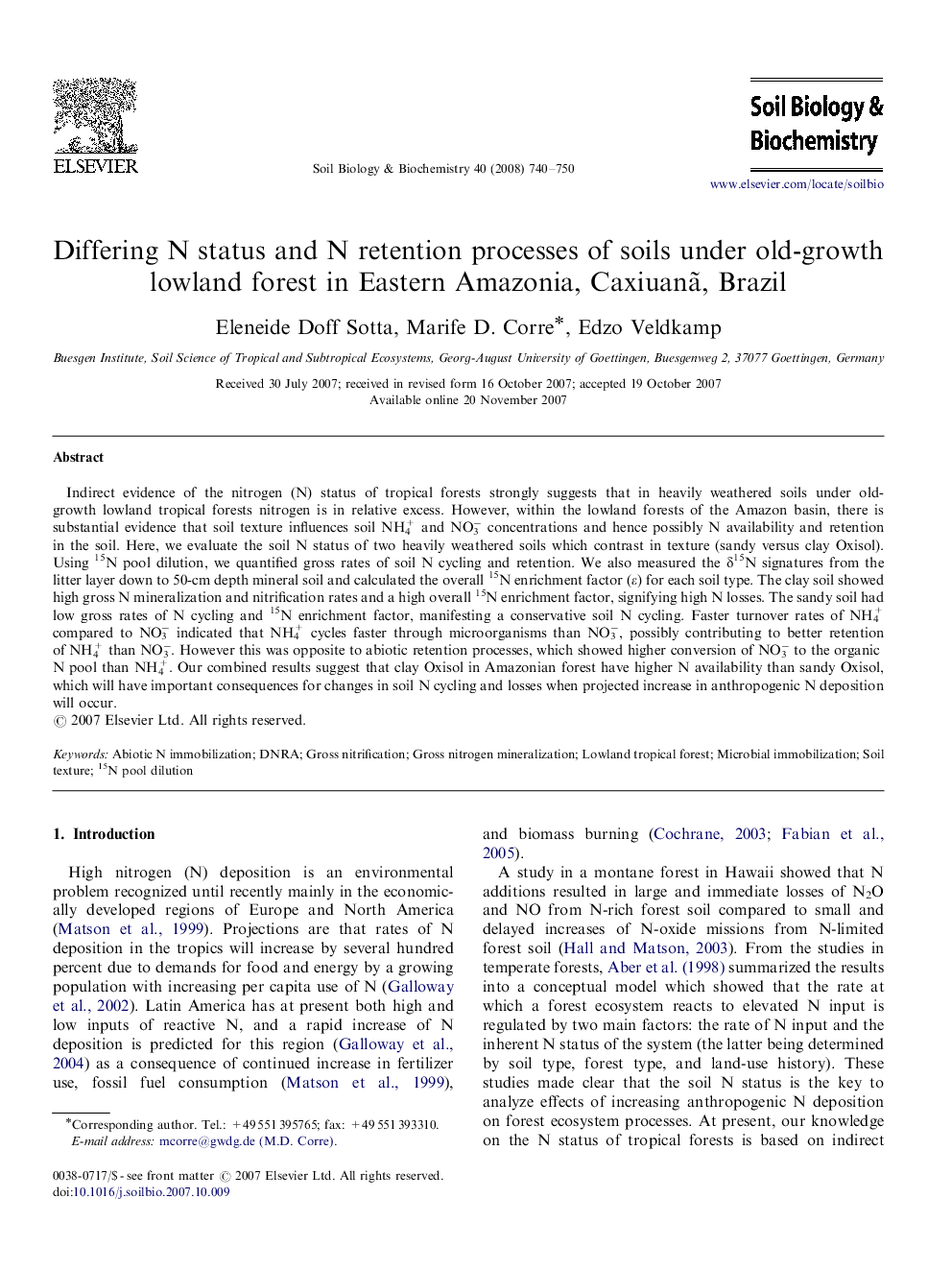| Article ID | Journal | Published Year | Pages | File Type |
|---|---|---|---|---|
| 2027000 | Soil Biology and Biochemistry | 2008 | 11 Pages |
Abstract
Indirect evidence of the nitrogen (N) status of tropical forests strongly suggests that in heavily weathered soils under old-growth lowland tropical forests nitrogen is in relative excess. However, within the lowland forests of the Amazon basin, there is substantial evidence that soil texture influences soil NH4+ and NO3â concentrations and hence possibly N availability and retention in the soil. Here, we evaluate the soil N status of two heavily weathered soils which contrast in texture (sandy versus clay Oxisol). Using 15N pool dilution, we quantified gross rates of soil N cycling and retention. We also measured the δ15N signatures from the litter layer down to 50-cm depth mineral soil and calculated the overall 15N enrichment factor (ε) for each soil type. The clay soil showed high gross N mineralization and nitrification rates and a high overall 15N enrichment factor, signifying high N losses. The sandy soil had low gross rates of N cycling and 15N enrichment factor, manifesting a conservative soil N cycling. Faster turnover rates of NH4+ compared to NO3â indicated that NH4+ cycles faster through microorganisms than NO3â, possibly contributing to better retention of NH4+ than NO3â. However this was opposite to abiotic retention processes, which showed higher conversion of NO3â to the organic N pool than NH4+. Our combined results suggest that clay Oxisol in Amazonian forest have higher N availability than sandy Oxisol, which will have important consequences for changes in soil N cycling and losses when projected increase in anthropogenic N deposition will occur.
Keywords
Related Topics
Life Sciences
Agricultural and Biological Sciences
Soil Science
Authors
Eleneide Doff Sotta, Marife D. Corre, Edzo Veldkamp,
